


By Blake Goll



By Blake Goll
By Blake Goll

Bottoms up! Here’s to the things done and left undone in 2015, the birds that were seen and those that got away, the dreams that took flight and those that are still taking root, and the rejuvenation and calm we found in the natural world amid the kaleidoscope of our lives.

“All birds, of course, are miracles, and humans have known this for millennia. We have looked to birds as oracles. Our hearts soar on their wings and their songs. Even the tiniest bird can teach us that life is larger than humankind alone.”
— Sy Montgomery, Author, Birdology
Happy New Year,
Blake
NOTE: For those of you viewing this post by email, please remember to click on the title to read the post from the actual site for a better viewing experience.

Ode to a Bander’s Autumnal World
by Blake Goll
As the ardent air of autumn eclipses the weary haze of summer’s last breath,
The wind whispers to the wild wings that it is time.
Oh how the northern trees must weep as they somberly settle into winter solitude
And yearn for the intimate avian romance that enchants their days of green.
By most of mankind, the birds’ desperate southern voyage goes unseen.
But to the fortunate few, like you and me, this is the splendor we have feverishly awaited!
As if a million precious gems of a giant royal chest were catapulted south,
We scramble frantically to touch as many as we can before they continue spilling past,
Each jewel in hand more exquisite and exciting than the last.
Like secretive spiders faithfully tending their dewy webs by dawn’s dim light,
We raise our mist nets in hopes of gently snaring a few denizens of the sky;
A small silver ring upon the ankle, a reverent study of intricate feathers, then the rapturous release that leaves us breathless in awe,
Each lovely feathered captive feeds our hunger to understand
The storied lives of the heavenly birds with whom we share the land.

The feathered gems are indeed, flying southward in all earnest now. The wood warblers are still abundant, but the mid-fall migrants are beginning to show up, like the thrushes, kinglets and Yellow-rumped Warblers. The endless procession of catbirds still has not diminished and White-throated Sparrows have yet to reach us.
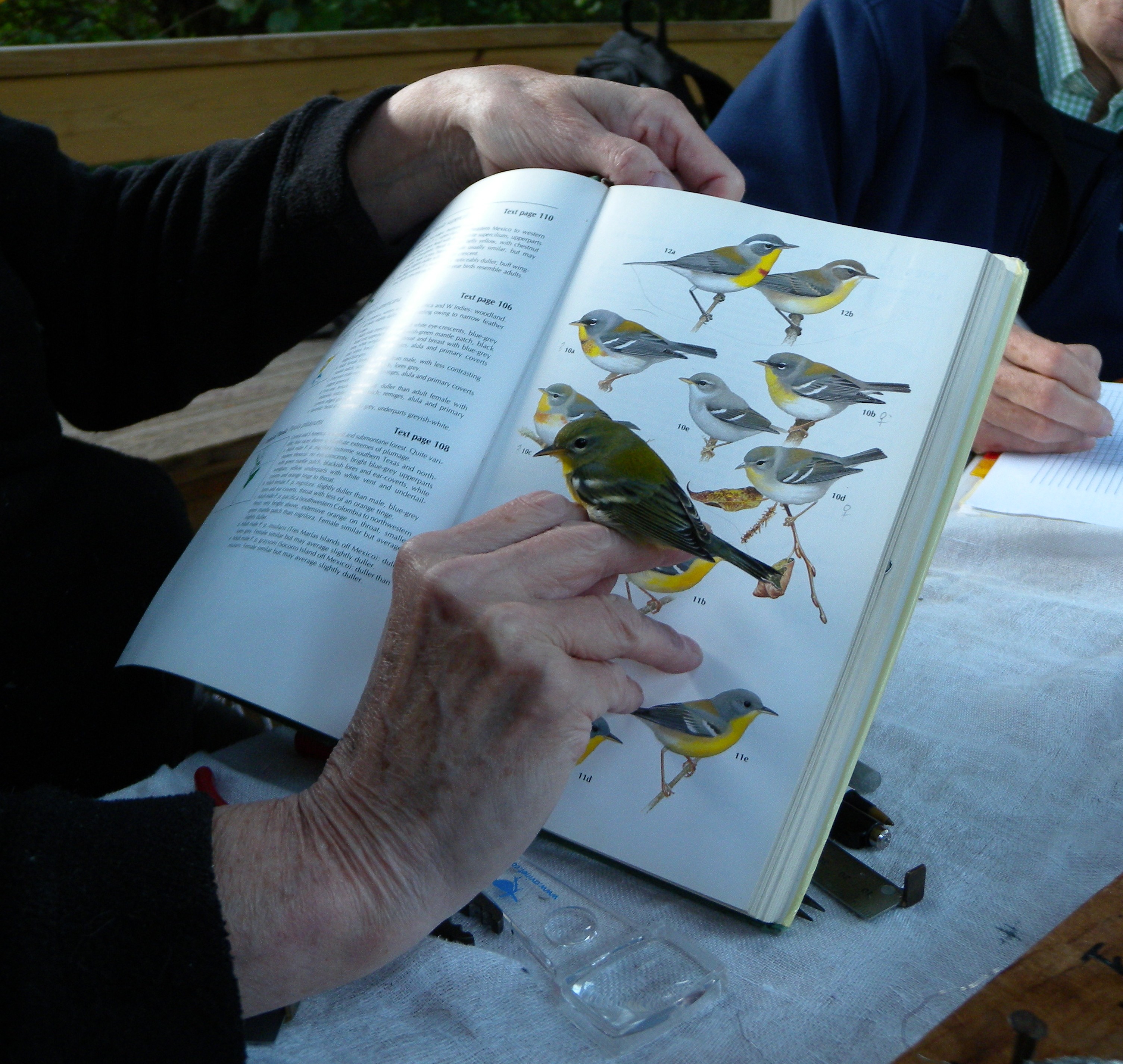
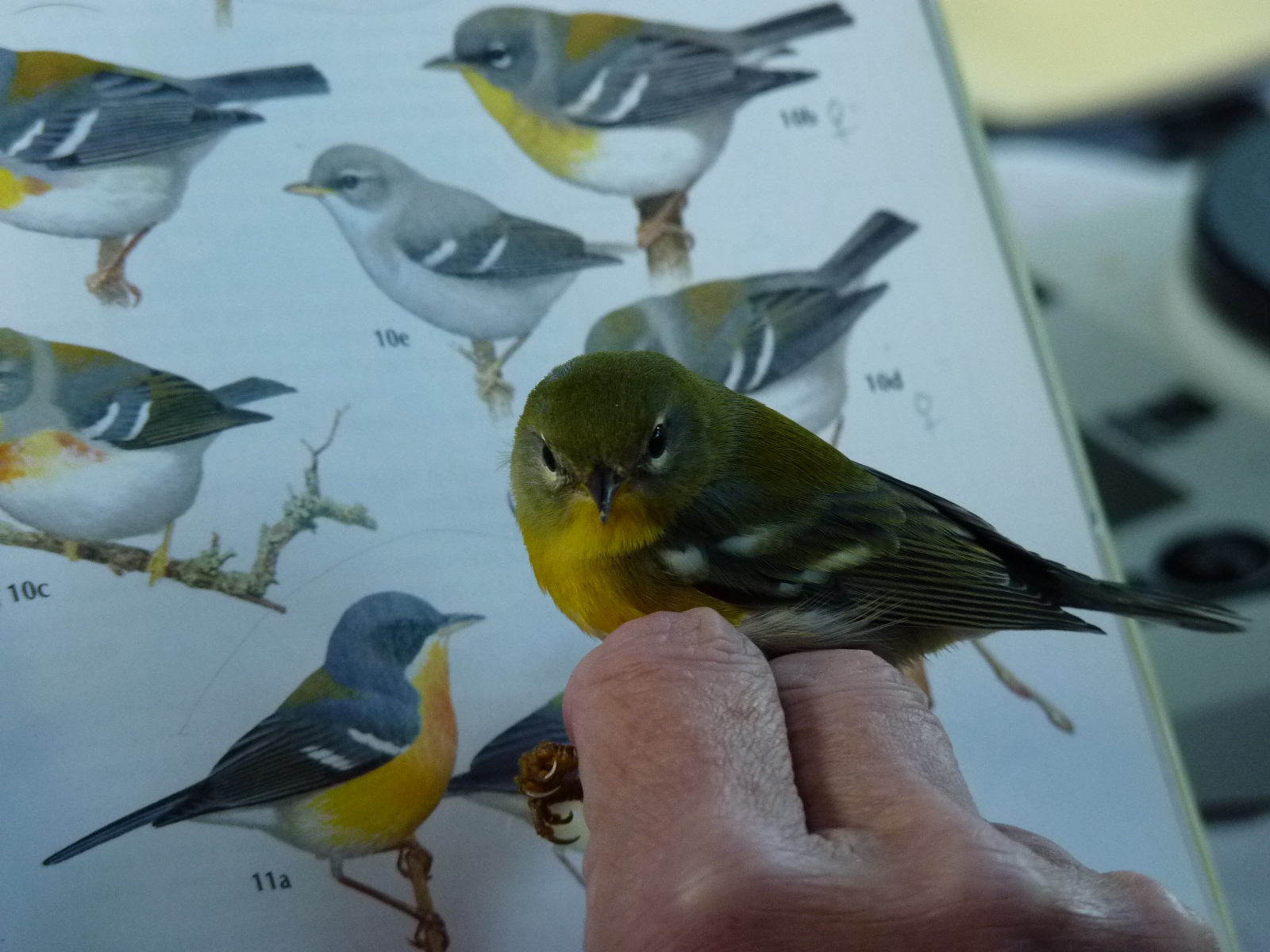
Yesterday, we banded 43 birds of eleven species for ten environmental educators from all over the country. The most notable birds were a beautiful first year female Northern Parula (only our third since 2010), a young Red-eyed Vireo (our second ever during migration banding) whose eyes were more brown than red, and the first Gray-cheeked Thrush of the season! We caught several Swainson’s Thrushes as well, distinguised from the Gray-cheeked by yellow orangish spectacles and buffy rather than gray cheeks. The Gray-cheeked Thrush is the most northen breeder of all America’s spotted thrushes and is infrequently seen; its gray pallor is a reflection of its austere tundra environment.



Heard and seen (but not netted) yesterday at the banding station were several small kettles of Broad-winged Hawk (nothing compared to the tens of thousands counted at DelCo and MontCo hawk watches), Red-breasted Nuthatch, and at least three Rose-breasted Grosbeaks. Sharp-shinned and Cooper’s Hawks circled over the net lanes looking for easy pickings.
We hosted 21 members of the Birding Club of Delaware County on Saturday and the staff of PA Audubon on Monday. Both of these days were relatively slow (around 35 birds each day), but the quality was stupendous! No one was mourning when a female Connecticut Warbler materialized and mesmerized with her quiet, rare beauty. This is a bird that evades most big time birders’ life lists, as I mentioned before, and it was our third of the season! Check out bird photographer Matt Levanowitz’s guest blog post on Nemesis Bird about his quest to find the mysterious Connecticut. Can somebody tell him he just needs to visit Rushton!?

Other birds banded earlier this week include Swainson’s Thrushes, Magnolia Warblers, Ovenbirds, Common Yellowthroat, Northern Cardinal, Yellow Shafted Flicker, Wood Thrush, Field Sparrow and one scruffy young male Eastern Towhee.





Though our banding crew was not able to be out last Sunday the 16th, it would have been great banding because there was a BIG flight over Southeastern PA the Saturday night before. I birded the woodlot behind my house in West Chester that morning from 9-10:30am, which is far too late by most birders’ standards. However, I really lucked out and got awesome close views of 13 migrant species bustling about: Chestnut-sided Warbler, Black-and-White Warbler, Black-throated Green Warbler, Northern Parula, Pine Warbler, Magnolia Warbler, Wood Thrush, Ruby-Crowned Kinglet, Rose-breasted Grosbeak, Red-eyed Vireo, Wood Pewee and my very first breath-taking BLACKBURNIAN WARBLERS! Who says you have to set your alarm at the crack of dawn for birding? My warblers were feeding so low in the understory at one point that I could actually hear their bills snapping as they chased the insects out from the leaves and into the open air near me. As close as they were though, it was still quite a task differentiating “confusing fall warbler” plumage. It’s much easier in the hand than when they are darting through the canopy!

Working my way backwards in news from Rushton banding station, last week we caught about 150 birds in 3 mornings. Perhaps the most thrilling catch was an itty bitty WIWA or Wilson’s Warbler on 9/11, only the second ever for Rushton! We measured the extensiveness of black on his head to determine he was an adult male. These handsome little guys breed largely in Canada and the Pacific Northwest.

That same day we also banded a trio of refined Cedar Waxwings: an adult female and two “kids”. Although we often hear and see Cedar Waxwing flocks feeding on berries and insects high in the hedgerow, this is the first time they have come down to our nets since fall of 2010.


On 9/11 we also banded three hatch year Song Sparrows, which we suspect are the ones born in the Tiger Stripe tomato plants this summer, a wonderful picture of the harmonious relationship between the sustainable farm and the birds.


At least two White-eyed Vireos were taunting us all last week, calling from the hedgerow, but never venturing into a net. However, at the end of the week we did manage to catch one young White-eyed Vireo! This is a fantastic bird with blue legs, an eery white, human-like eye and an uncanny resemblance to a miniature velociraptor, if you ask me.


Other birds banded last week include:



Birds noted but not banded last week include a dozen or so American Wood Cocks, which we flushed at dawn’s first light from the fields, and a Common Nighthawk, which flew from its roost at the edge of the woods late one morning as we were closing the nets.
Rushton Banding Station is in operation and open to the public every Tuesday and Thursday mornings from 6am until 11am, unless it rains. In addition, we will be open to visitors Wednesday morning September 26th, 6am-11am.
Songbird banding runs until mid to late October when we start banding for Northern Saw-whet Owls. Stay tuned for more info about owl banding.


Run-A-Muck is TOMORROW September 22!
Come out to support the Willistown Conservation Trust’s land preservation efforts and enjoy a challenging run or leisurely walk through the most scenic trails of rural Willistown, not normally open to the public. Country supper, live music, wine, beer, movie under the stars, mechanical bull rides, prizes, raffle and more! Click here to find out more. Registration is only on a walk-in basis at this point, but you may still purchase raffle tickets online for a chance to win $5,000, even if you are not at the event!!
Hawk Mountain Art Show September 22-23
Check out the hawk watch and then enjoy the dozen talented wildlife artists who will have their artwork on display and for sale in the Visitor Center. Click here to learn more about the artists.
By the way, on Monday 2,806 migrant monarch butterflies passed by the Hawk Mountain lookout, a one-day record that beats the average SEASON total over the last 21 years of 1,804 monarchs! WOW.
There’s a lot going on out there,
~Blake

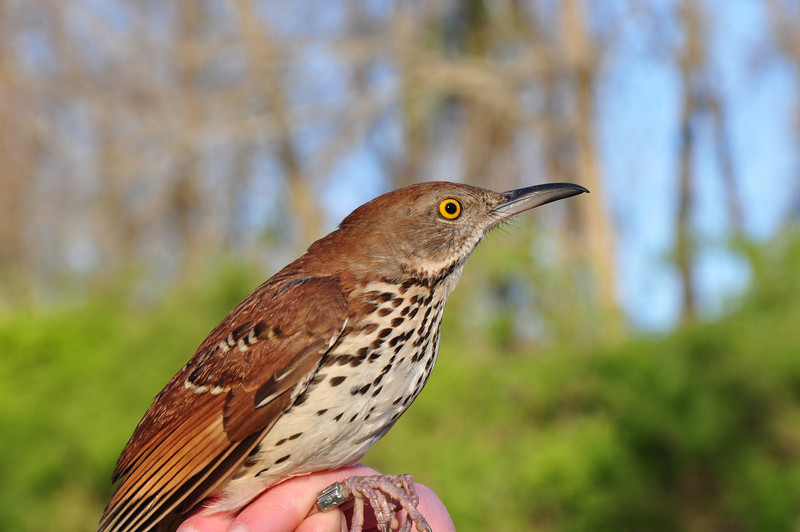
The vernal clock is ticking, the fervent winds from the South are rising, and I can almost hear the steady beating of the wings as the migrant wave swells steadily northward. The birds that have already arrived or passed through seem to be twittering, “The tide is coming, the tide is coming!”, as they hurriedly move on or get right down to reserving the best territories before the crowd comes.
The crowd is indeed coming! Birders have been reporting that migration is “raging” in the south, and birds in the east that have been bottled up by the recent storms just moved north in massive numbers in the last couple of nights. Although it is still a bit early for neo-tropical migrants here, we can expect to see increasing numbers of warblers, vireos, tanagers, orioles and grosbeaks.

Check out this radar image of migration movement south of us last night. The circles of blue indicate migrating birds, while the irregular patterns are storms. Pretty cool, huh? Radar images are being used more regularly in ornithology and birding to help predict bird migration and link bird movements to weather patterns.

We are expecting the banding station to start getting very busy! We have been open for “birdness” (as Lisa Kiziuk, Director of the WCT Bird Conservation Program, puts it) for the past three weeks, and things have been pretty quiet with only half a dozen birds on some days. However, we have had good quality to make up for the lack of quantity: a migrant flock of American Robins, several Brown Thrashers, nice little flocks of White-throated Sparrows, a couple Winter Wrens, Hermit Thrush, a White-eyed Vireo, and a red phase Eastern Screech Owl! A pair of Brown Thrashers are nesting at Rushton Woods Preserve, so we get to listen to the male’s lovely song every morning.

Last week, we captured a recap Common Yellowthroat ; we had banded him in a previous year, so he has returned safely to his summer home! This week, Gray Catbirds arrived, including one of ours that we banded at Rushton last year. Welcome home! I’m never more excited to see a catbird than I am for the first catbird of the year. They become so common so fast, our “bread and butter bird”, but for now the Catbird elicits smiles from ear to ear as if he were a good friend of ours that had been out of touch for years. His beautiful song now fills the woods and our yards with tropical euphony.

Those tiny denizens of the leaves, the wood warblers, should be arriving now that their tree havens have sprung to life. I can’t wait!

Don’t forget about our Warbler Walk at Kirkwood Preserve next Sunday May 6 from 7:30am -10am, led by our federally licensed bird bander and master birder, Doris McGovern! We will meet in the Kirkwood parking lot on Grubbs Mill Road. Please RSVP to me, Blake Goll (bhg@wctrust.org), by May 3.
Also be sure to visit the banding station at Rushton Woods Preserve and Farm as migration picks up. We are open to the public Tuesday and Thursday mornings from sunrise (5:30am) until about 11am (unless it rains). No need to RSVP unless you plan to bring a large group. We band to contribute to global bird conservation efforts, to document the bird populations and species diversity using the preserve, and to connect people to nature through intimate experiences with birds.

The PA Young Birders had a blast birding and “migrating” this past Saturday at Rushton. The children had a chance to hold the newly hatched and very naked Carolina Wren nestlings, which we borrowed from the funky weed wacker nest. What was Mama Wren thinking? Needless to say, our farm staff will be short one weed wacker this season! What a perfect picture of farm and nature existing in harmony.


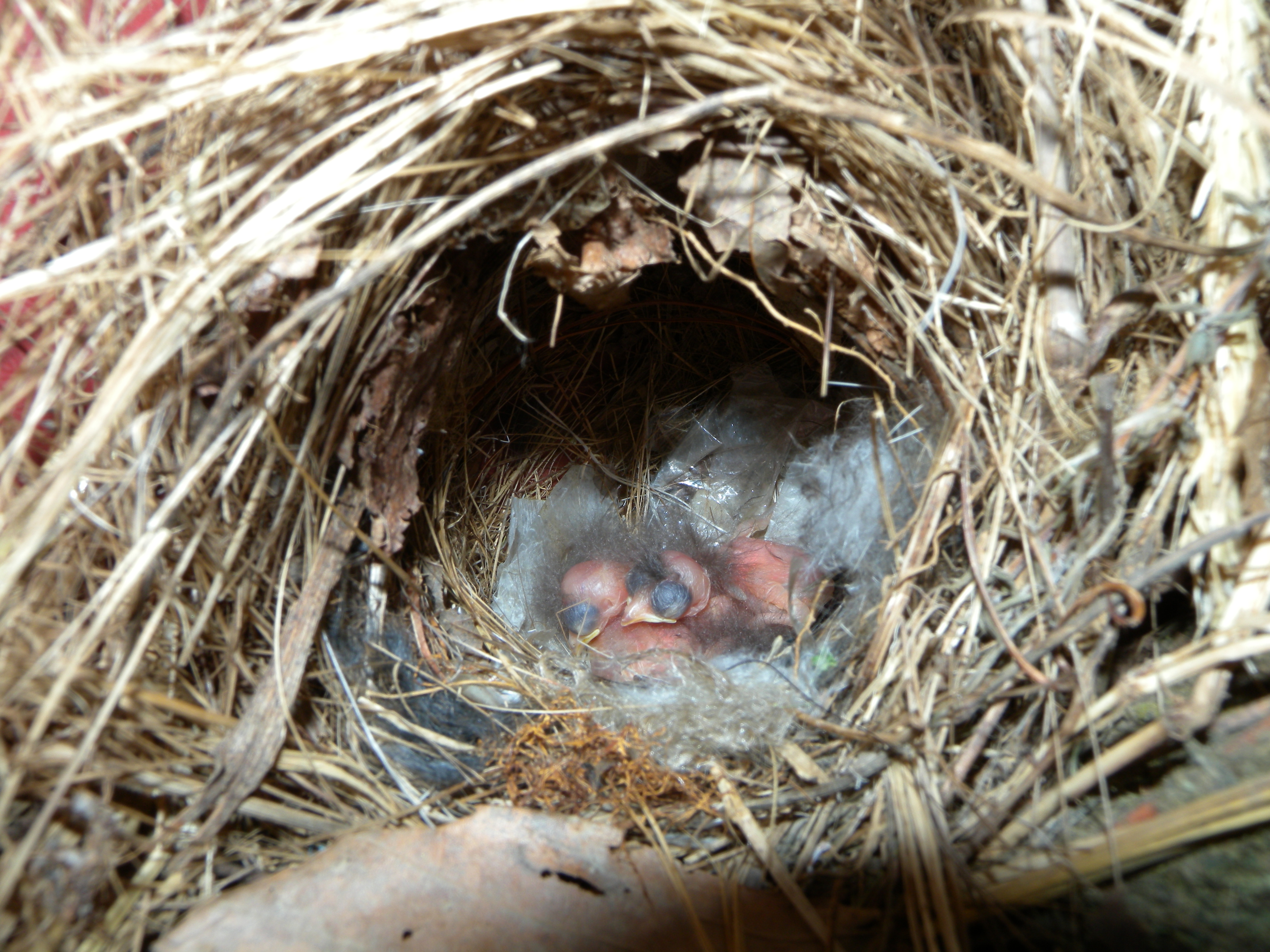

The Young Birders also got their exercise racing against each other in an obstacle course that simulated bird migration and the many (often human imposed) hazards birds must face. These hazards included having to find food and water while avoiding being eaten by cats and other predators, weaving in and out of buildings in a city, avoiding glass windows, flying over habitat destruction and around windmills, and dodging cars! (No children were injured in this simulation).

The next PAYB meeting, “Spring Migration Morning at the Rushton Woods Preserve Banding Station” will be held Saturday May 19, 9am-11am. The children will experience songbirds in the hand and science in the field during the peak of spring migration at Rushton. We offer this unforgettable memory to children for free, but a donation of $5 per child is suggested to help us maintain our special outdoor classroom and quality educational programs. Please RSVP to me, Blake Goll (bhg@wctrust.org).

Also coming up is the Pretty Big Bird Day , May 12 from as early as you wish until 6pm. Click here for more information about the event. This event is a friendly competition between teams to see who can spot the most species in the Willistown area. Families and birders of all ages are welcome! Form your own team or join an existing one by contacting Dick Eales at REales@gmail.com. Any interested PA Young Birders should contact me, Blake Goll (bhg@wctrust.org), by May 8th to join my team for a couple hours of the competition!
Here is a picture of the happy bluebird babies in my own backyard. They all hatched successfully before the egg- pecking House Wren returned, and they are just 4 or 5 days from fledging! Unfortunately, the bluebird family at Rushton was not so lucky. They nested much later than mine, and their eggs were pecked this week by the aggressive House Wren. Hopefully, once the wren gets busy with his own nest, the bluebirds will have a chance. We also plan to place three more bluebird boxes at Rushton in a more open area of the fields, far away from the hedgerow. Bluebird boxes that are too close to hedges or the edge of woods are at high risk for wren predation.
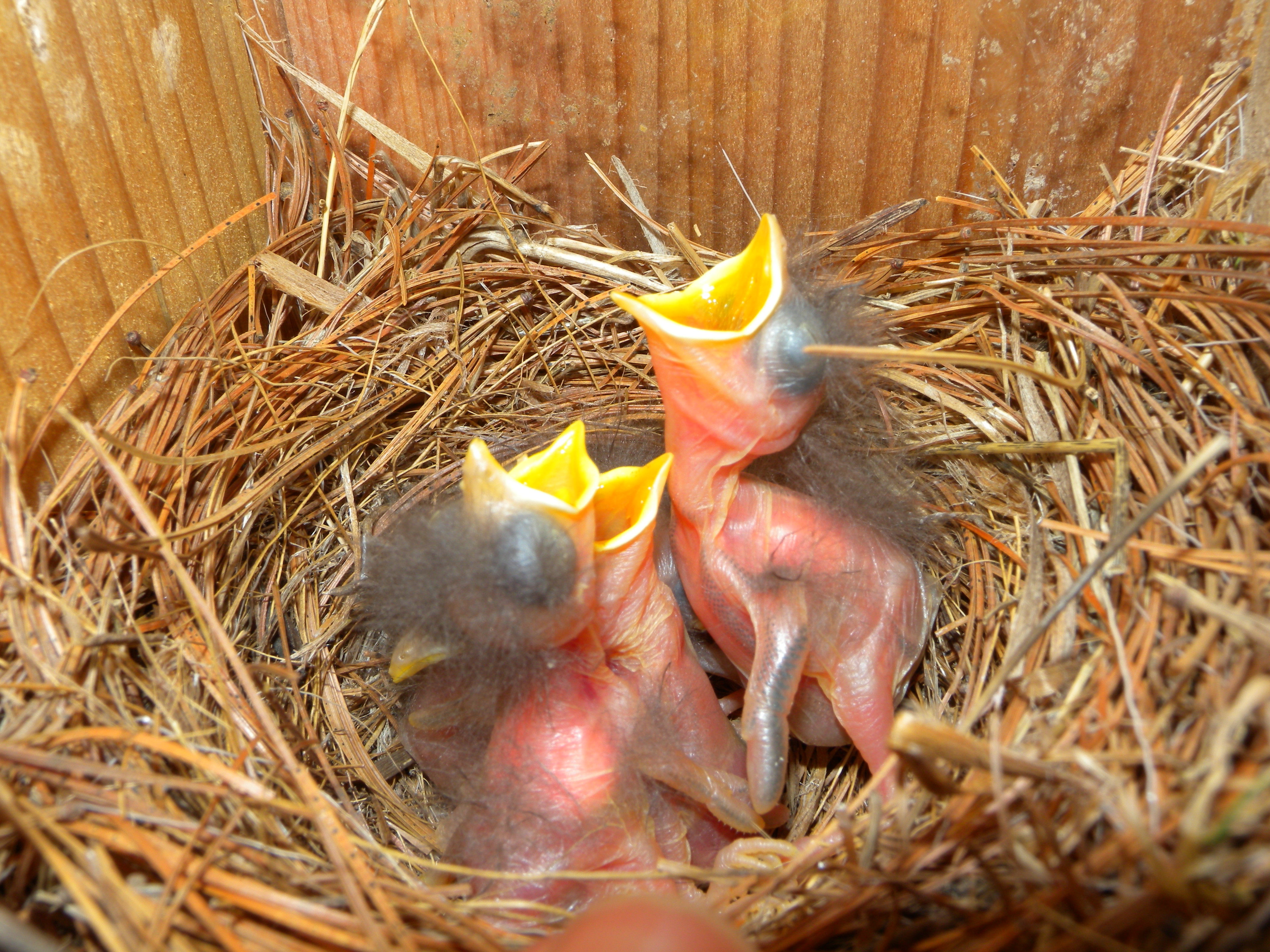
The skies are alive at Rushton with the theatrical dynamics of the Tree Swallows, which are starting their nests. Fred De Long, Director of the Farm, remembers when there was only one lone pair of swallows 3 years ago when the farm was just starting out. This year, there are several pairs; like the orioles, the swallows seem to be flourishing with the maturation of the sustainable farm nestled in the nature preserve.

Lisa Kiziuk has a family of House Finches that nested in her wreath at her home. The babies have already fledged and the TAP students ( The Achievement Project of Chester), who have been learning about the farm and birds, were thrilled to have a chance to cradle the charming nestlings in their hands last week. House finches were once sold as pets and called Hollywood Finches; their sweet and amusing dispositions coupled with their beautiful song make it easy to see why they were desirable pets!


Born on April 26, 1785, he is one of the most celebrated French-American ornithologists, naturalists, and painters. His seminal work, “The Birds of North America,” is considered the finest ornithological work ever completed and can be viewed online here. This online version is definitely not as fabulous as the real thing (which is a wonderful coffee table book!), but fun to browse nonetheless.

Excuse me, but I must go plant a tree for the birds…
Happy Arbor Day!
~Blake

925 Providence Road
Newtown Square, PA 19073
(610) 353-2562
land@wctrust.org
